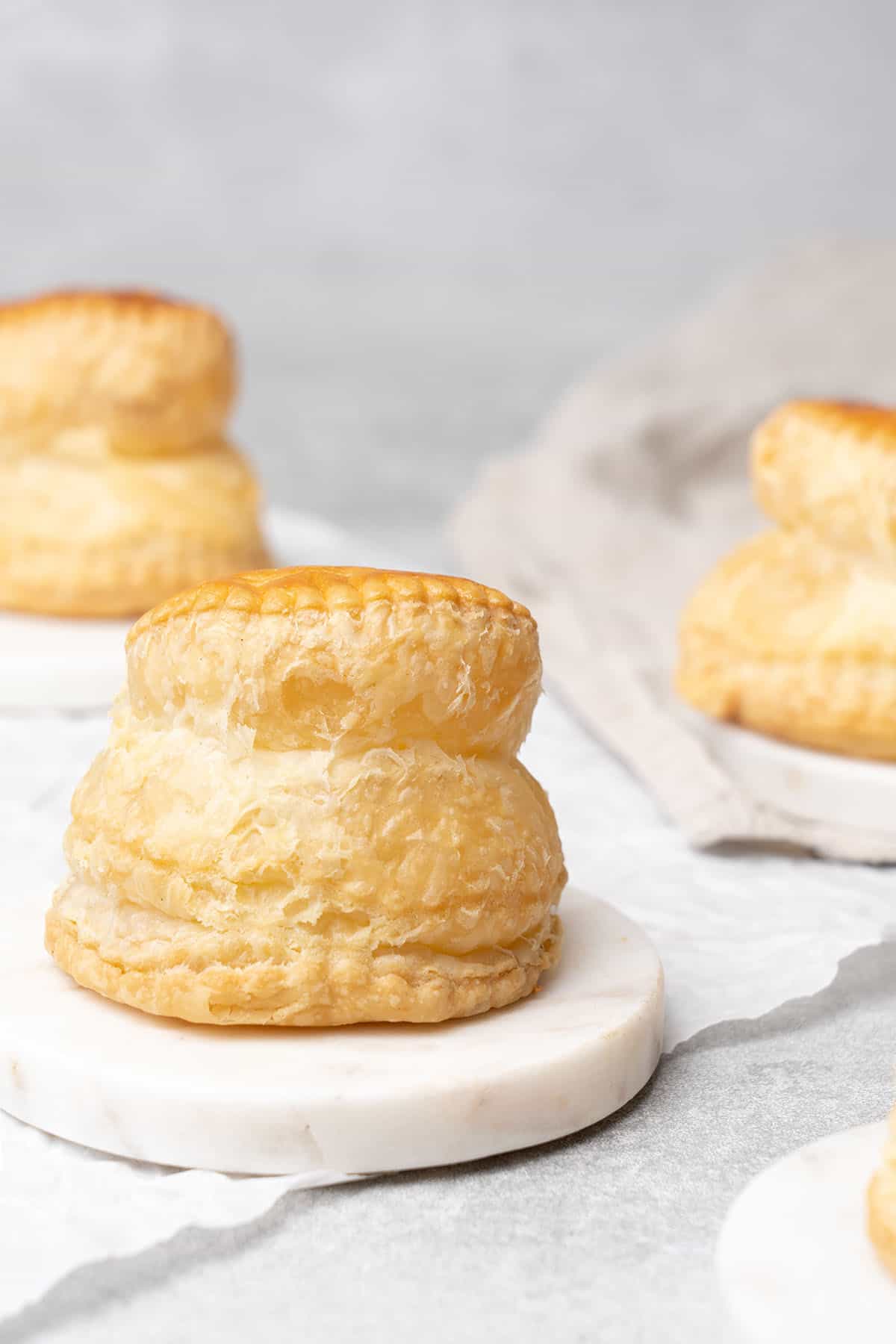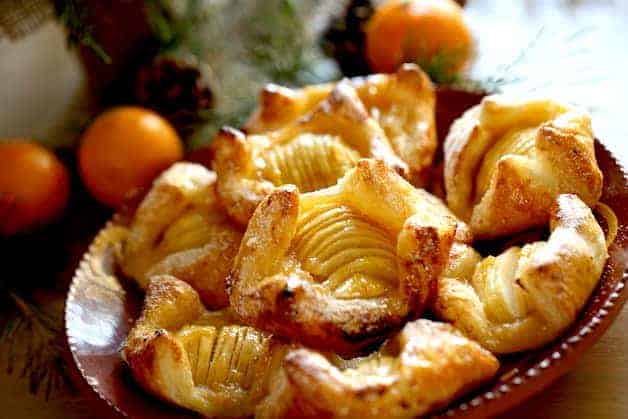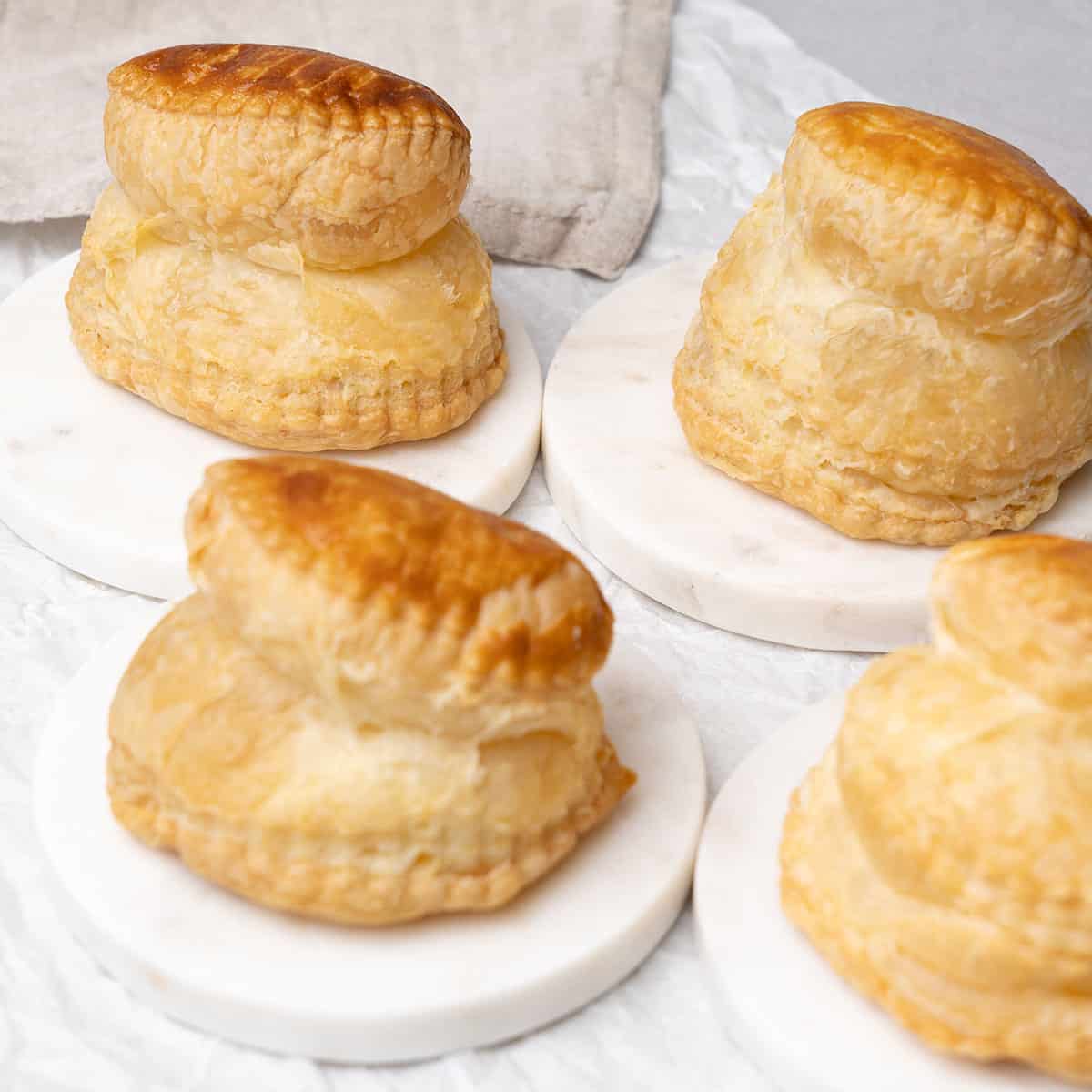French puff pastry is a delight in the world of baking. Its flaky layers and buttery taste make it a favorite.
For those who love baking, mastering puff pastry is a must. This French recipe is easy to follow and brings authentic flavor to your table. Puff pastry is versatile, used in both sweet and savory dishes. Whether you’re making a dessert or an appetizer, this recipe will be your go-to.
The secret lies in the folding technique, creating thin, crispy layers. With patience and practice, you can achieve perfect puff pastry at home. Ready to impress your family and friends? Let’s dive into this classic French puff pastry recipe and elevate your baking skills.

Credit: m.youtube.com
Introduction To French Puff Pastry
French puff pastry, known for its delicate layers and buttery taste, is a classic in French baking. This versatile dough can be used in both sweet and savory dishes. From croissants to tarts, puff pastry adds a touch of elegance to any recipe. Let’s dive deeper into what makes this pastry so special.
What Is Puff Pastry?
Puff pastry is a light, flaky dough made from simple ingredients: flour, water, salt, and butter. The key to its unique texture lies in the technique of folding and rolling the dough. This process creates multiple thin layers of dough separated by butter. When baked, the water in the butter turns to steam, causing the dough to puff up and form crisp layers.
Here’s a basic breakdown of the puff pastry ingredients:
| Ingredient | Quantity |
|---|---|
| Flour | 2 cups |
| Butter | 1 cup |
| Water | 1/2 cup |
| Salt | 1/2 tsp |
History And Origins
The origins of puff pastry trace back to ancient times. Some historians believe that the Egyptians and Greeks had early versions of layered dough. The modern puff pastry, as we know it, was perfected in France in the 17th century.
Chef Claude Lorrain, a French pastry chef, is often credited with inventing the modern puff pastry. He was experimenting with dough and butter, trying to create a lighter pastry. His technique of folding and rolling the dough with butter resulted in the layered, flaky texture we love today.
Over the centuries, puff pastry has remained a staple in French cuisine. It is used in many traditional dishes like croissants, vol-au-vent, and mille-feuille. Its versatility and rich taste make it a favorite among chefs and home bakers alike.
Essential Ingredients
Creating a perfect French puff pastry requires just a few essential ingredients. Each ingredient plays a crucial role in achieving the flaky, buttery layers that make this pastry so delightful. Let’s explore these ingredients in detail.
Butter
Butter is the heart and soul of puff pastry. It provides the rich flavor and helps in creating those distinct layers. Always use unsalted butter for better control over the seasoning. The butter should be cold but pliable. This ensures it blends well without melting too quickly.
Flour
Flour forms the structure of the puff pastry. Use all-purpose flour for a balance between strength and tenderness. Ensure to sift the flour to remove any lumps. This makes the dough smooth. A little extra flour can be used for dusting while rolling out the dough.
Water And Salt
Water binds the flour and butter together. Use cold water to keep the dough temperature low. This helps in forming the layers. A pinch of salt enhances the flavor. It should be dissolved in water before adding to the flour. This ensures even distribution throughout the dough.
Here’s a quick summary of the ingredients:
| Ingredient | Quantity |
|---|---|
| Unsalted Butter | 1 cup (225g) |
| All-Purpose Flour | 2 cups (250g) |
| Cold Water | 1/2 cup (120ml) |
| Salt | 1/2 tsp |
Equipment Needed
Creating French puff pastry at home can be a rewarding experience. To make the perfect puff pastry, you need the right equipment. Having these tools on hand will make the process smoother and more enjoyable.
Rolling Pin
A rolling pin is essential for puff pastry. It helps flatten the dough evenly. Choose a sturdy rolling pin that feels comfortable in your hands. A heavy rolling pin can help with even rolling.
Pastry Board
A pastry board provides a dedicated surface for rolling out dough. It keeps your countertop clean. Look for a non-stick or marble board. It will make handling the dough easier.
Sharp Knife
A sharp knife is vital for cutting the dough. It ensures clean and precise cuts. Use it to trim edges and shape the pastry. A dull knife can ruin the dough’s layers.
Step-by-step Preparation
Creating authentic French puff pastry can seem challenging. But with a clear, step-by-step guide, it becomes manageable. This section will walk you through each stage of the preparation process. Follow these steps for a flaky, delicious puff pastry.
Mixing The Dough
Start by gathering your ingredients. You will need:
- 2 1/2 cups all-purpose flour
- 1 cup cold water
- 1 teaspoon salt
- 1 cup unsalted butter
Mix the flour and salt in a large bowl. Add the cold water gradually. Stir until the dough forms a ball. Wrap the dough in plastic wrap. Let it rest for 30 minutes.
Rolling And Folding
Next, roll out the dough on a floured surface. Shape it into a rectangle. Place the cold butter in the center. Fold the dough over the butter. Seal the edges.
Roll the dough into a long rectangle. Fold it into thirds, like a letter. This is known as a “turn.” Rotate the dough 90 degrees. Repeat the rolling and folding process six times.
Chilling The Dough
Chill the dough between each turn. Wrap it in plastic wrap. Place it in the refrigerator for 30 minutes. This step is crucial. It keeps the butter cold and ensures flaky layers.
After completing all the turns, chill the dough for at least an hour. It is now ready to use in your favorite recipe.
Common Techniques
French puff pastry is a delight to the senses. Its flaky, buttery layers are achieved through specific techniques. Understanding these techniques ensures success in creating this delicious pastry.
Laminating
Laminating is essential for puff pastry. It involves folding butter into the dough multiple times. This creates thin layers of dough and butter. These layers puff up during baking, forming the pastry’s characteristic texture. Keep the dough and butter cold. This prevents them from blending together. The result is a perfect, flaky pastry.
Docking
Docking involves piercing the dough with a fork. This prevents excessive puffing during baking. Docking helps the dough rise evenly. It ensures a uniform texture. This step is crucial for pastries that need a flat surface. Examples include tarts and some types of pies.
Blind Baking
Blind baking is pre-baking the pastry shell without filling. This helps achieve a crisp crust. It is often used for pies and tarts with moist fillings. Line the pastry with parchment paper. Fill it with baking weights or dried beans. This keeps the dough from puffing up. Bake until the crust is golden and firm.
Tips For Perfect Puff Pastry
Creating the perfect puff pastry at home can be rewarding. It requires patience and attention to detail. With the right techniques, you can achieve flaky layers and a delicious texture. Below, discover essential tips for making perfect puff pastry.
Maintaining Cold Ingredients
Keep all ingredients chilled. This includes butter and water. Cold ingredients help create the flaky layers in puff pastry.
Use ice-cold water. It prevents the butter from melting. This ensures a perfect dough consistency.
Refrigerate the dough often. Especially between rolling and folding steps. This helps maintain the temperature.
Proper Rolling Technique
Roll out the dough gently. Apply even pressure. This prevents tearing or uneven layers.
Always roll in one direction. Rotate the dough as needed. This keeps the layers intact.
Use a light dusting of flour. Too much flour can dry out the dough. Just enough to prevent sticking.
Avoiding Overworking
Handle the dough as little as possible. Too much handling can make it tough.
Fold the dough carefully. Follow the required number of folds. Over-folding can ruin the texture.
Rest the dough. Allow it to relax between folds. This ensures a tender and flaky pastry.
Popular Puff Pastry Recipes
French puff pastry offers a world of delightful possibilities. Whether it’s sweet or savory, the flaky layers add a touch of elegance to any dish. Let’s explore some popular puff pastry recipes that you can try at home.
Croissants
Croissants are the quintessential puff pastry treat. These buttery, flaky rolls are perfect for breakfast. Serve them warm with a spread of jam or butter. Their golden crust and soft, airy inside make them irresistible.
Vol-au-vent
Vol-au-Vent is a classic French appetizer. It consists of a small, hollow case of puff pastry. Fill it with savory ingredients like mushrooms, chicken, or seafood. The crisp pastry combined with rich fillings creates a delightful bite.
Palmiers
Palmiers are sweet, heart-shaped pastries. Made from sugar and puff pastry, they are caramelized to perfection. These simple yet elegant cookies are great with tea or coffee. Their sugary crunch and delicate layers make them a favorite.

Credit: www.spatuladesserts.com
Serving Suggestions
French puff pastry, with its delicate layers, is versatile. Serve it with a variety of fillings and presentation styles to delight your guests. Below are some serving suggestions for both sweet and savory options, and ideas on how to present them.
Sweet Fillings
Sweet puff pastries are a hit at any gathering. Choose from various fillings to match your taste.
- Chocolate: Melted chocolate inside the pastry makes for a rich treat.
- Fruit Preserves: Strawberry, apricot, or raspberry preserves add a fruity punch.
- Cream Cheese: A blend of cream cheese and sugar creates a creamy filling.
- Cinnamon Sugar: Sprinkle with a mix of cinnamon and sugar for a classic taste.
Savory Fillings
Savory puff pastries are perfect for brunch or appetizers. Fill them with a variety of ingredients.
- Cheese: Use gouda, cheddar, or brie for a delightful taste.
- Spinach and Feta: A Greek-inspired filling that is always popular.
- Mushroom: Sautéed mushrooms and herbs make a hearty option.
- Ham and Cheese: A classic combination that never disappoints.
Presentation Ideas
How you present your puff pastries can enhance their appeal. Use these ideas to impress your guests.
- Plating: Arrange pastries on a decorative platter. Add fresh fruit or herbs for color.
- Drizzles: For sweet pastries, drizzle with chocolate or caramel sauce. For savory, use balsamic reduction.
- Powdered Sugar: A light dusting of powdered sugar on sweet pastries looks elegant.
- Pastry Shapes: Cut dough into different shapes. Twists, braids, and pinwheels add visual interest.

Credit: entertainingwithbeth.com
Frequently Asked Questions
What Is French Puff Pastry?
French puff pastry is a light, flaky, and buttery dough. It’s made by layering butter and dough repeatedly. This creates numerous thin layers.
How Do You Make Puff Pastry Dough?
To make puff pastry dough, start with flour, water, and salt. Incorporate cold butter, then fold and roll multiple times to create layers.
Can I Make Puff Pastry Ahead Of Time?
Yes, you can make puff pastry ahead. Store it in the refrigerator for up to three days. For longer storage, freeze it.
What Dishes Use French Puff Pastry?
French puff pastry is versatile. It can be used for desserts like croissants and savory dishes like beef Wellington.
Conclusion
Creating French puff pastry at home is easier than you think. With just a few ingredients and patience, you can enjoy flaky, buttery pastries. Follow the steps carefully, and you’ll impress your friends and family. Practice makes perfect, so don’t worry if the first attempt isn’t flawless.
Enjoy the process and the delicious results. Happy baking!
